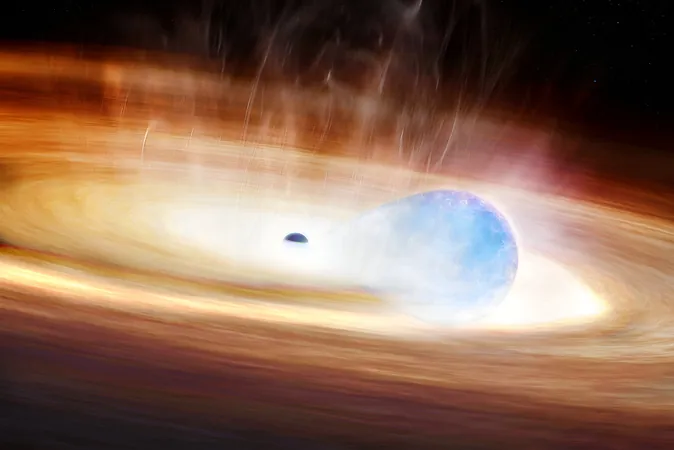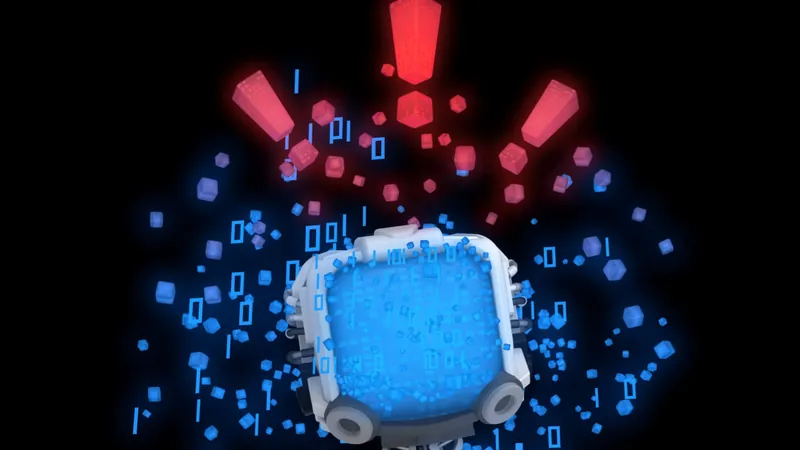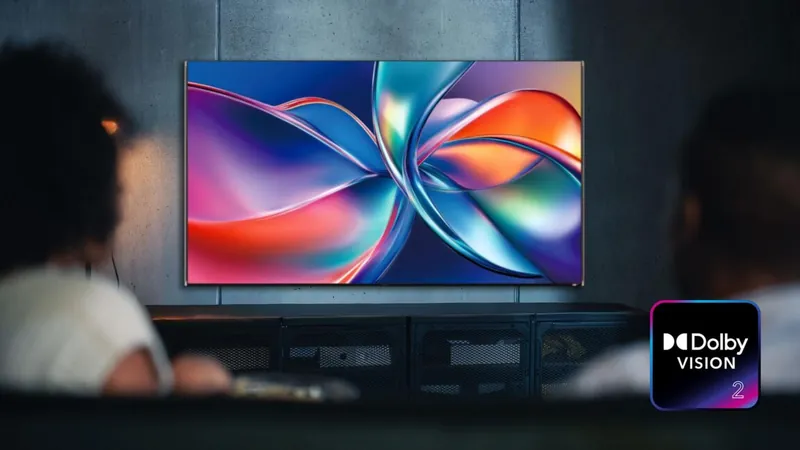
Can Black Holes Trigger Supernovae? The Astonishing Case of SN 2023zkd
2025-08-24
Author: Noah
Astronomers Unveil a Cosmic Mystery
In a groundbreaking discovery, astronomers have observed a star merging with a black hole, culminating in a spectacular supernova event. Thanks to cutting-edge AI technology, researchers have been able to analyze this extraordinary phenomenon as it unfolded.
A Rare Cosmic Flash
In July 2023, the Zwicky Transient Facility (ZTF) flagged an unusual cosmic burst, now identified as SN 2023zkd. Initial observations revealed that this explosion was far from ordinary.
The Young Supernova Experiment's Contribution
The discovery emerged from the Young Supernova Experiment (YSE), a collaboration of scientists from the Center for Astrophysics at Harvard & Smithsonian and MIT. This team brought forth crucial insights into the nature of supernovas.
An Uncommon Supernova Origin
SN 2023zkd is believed to have originated from a massive star straddling a precarious orbit with a black hole. Over time, the black hole's insatiable gravity siphoned off gas and dust from the star, stripping away its angular momentum and pulling it closer.
The Drastic Transformation
As it drew nearer, the star faced unbearable gravitational forces, ultimately resulting in what astronomers call an instability-induced merger. This process can ignite a star’s explosive demise earlier than expected.
Insights from AI Technology
Leading the study, researcher Alexander Gagliano from the NSF Institute for Artificial Intelligence and Fundamental Interactions highlighted the significance of tracking massive stars as they near their end.
AI-Powered Detection
Utilizing sophisticated AI tools, scientists like Gagliano examined thousands of light curves to identify subtle signs of stellar outbursts. One such tool, the Lightcurve Anomaly Identification and Similarity Search (LAISS), played a pivotal role in identifying unusual color changes in SN 2023zkd.
Peaks of Brightness
As researchers monitored the star's decline, they noted two significant peaks in brightness. The first occurred when the shockwave from the explosion collided with previously expelled gas. The second emerged from the interaction between the ejecta and a denser ring of material surrounding the star.
Debunking Single-Star Theories
At first, astronomers hypothesized single-star scenarios, including a luminous blue variable (LBV), a notorious massive star known for violent eruptions. However, the unmatched brightness of SN 2023zkd quickly dismissed these theories, steering the investigation toward the binary merger notion.
Revealing the Universe's Secrets
SN 2023zkd serves as a glimpse into a new era in astronomy where large observatories and AI systems collaborate seamlessly. This research utilized data from diverse telescopes across the globe, encompassing the U.S., Australia, and Japan.
The Future of Stellar Exploration
Gagliano remarked on a fascinating new chapter of astronomy: “We’re entering a time where we can detect these rare events in real-time, allowing us to connect the dots between a star's life cycle and its explosive death.” The study appeared in the August edition of The Astrophysical Journal, setting the stage for future cosmic explorations.









 Brasil (PT)
Brasil (PT)
 Canada (EN)
Canada (EN)
 Chile (ES)
Chile (ES)
 Česko (CS)
Česko (CS)
 대한민국 (KO)
대한민국 (KO)
 España (ES)
España (ES)
 France (FR)
France (FR)
 Hong Kong (EN)
Hong Kong (EN)
 Italia (IT)
Italia (IT)
 日本 (JA)
日本 (JA)
 Magyarország (HU)
Magyarország (HU)
 Norge (NO)
Norge (NO)
 Polska (PL)
Polska (PL)
 Schweiz (DE)
Schweiz (DE)
 Singapore (EN)
Singapore (EN)
 Sverige (SV)
Sverige (SV)
 Suomi (FI)
Suomi (FI)
 Türkiye (TR)
Türkiye (TR)
 الإمارات العربية المتحدة (AR)
الإمارات العربية المتحدة (AR)